** This post has been written and produced by the Yugul Mangi Rangers of south-east Arnhem Land, with Emilie Ens and Mitchell Scott (Macquarie University, Sydney).
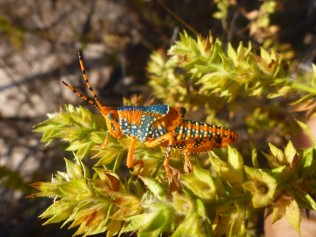
Thanks to ALA support, the Yugul Mangi Rangers and ecologists Emilie Ens and Mitchell Scott have entered the first ALA record of the near-threatened Leichhardt’s Grasshopper (Petasida ephippigera) for Arnhem Land. The culturally significant and brightly-coloured species continues to battle against the odds of changing fire regimes and a dietary dependence, to survive in the rugged sandstone escarpment of some of Australia’s most inaccessible country.
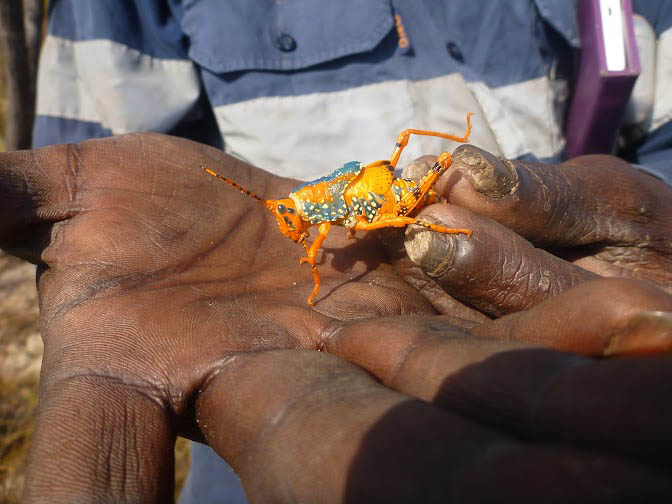
Walking along a dry sandy creek bed, bare feet buried in hot sand, November sun blazing down relentlessly, Rangers and Ecologists are out on Country conducting two-way biodiversity surveys with the support of the ALA. As we traversed the landscape on foot we noticed an unusual shrub amongst the spinifex, from the genus Pityrodia. Our minds were cast to the relationship between this species of plant and a charismatic yet near-threatened grasshopper, well known by both Indigenous and non-Indigenous minds, but today rarely seen by either.
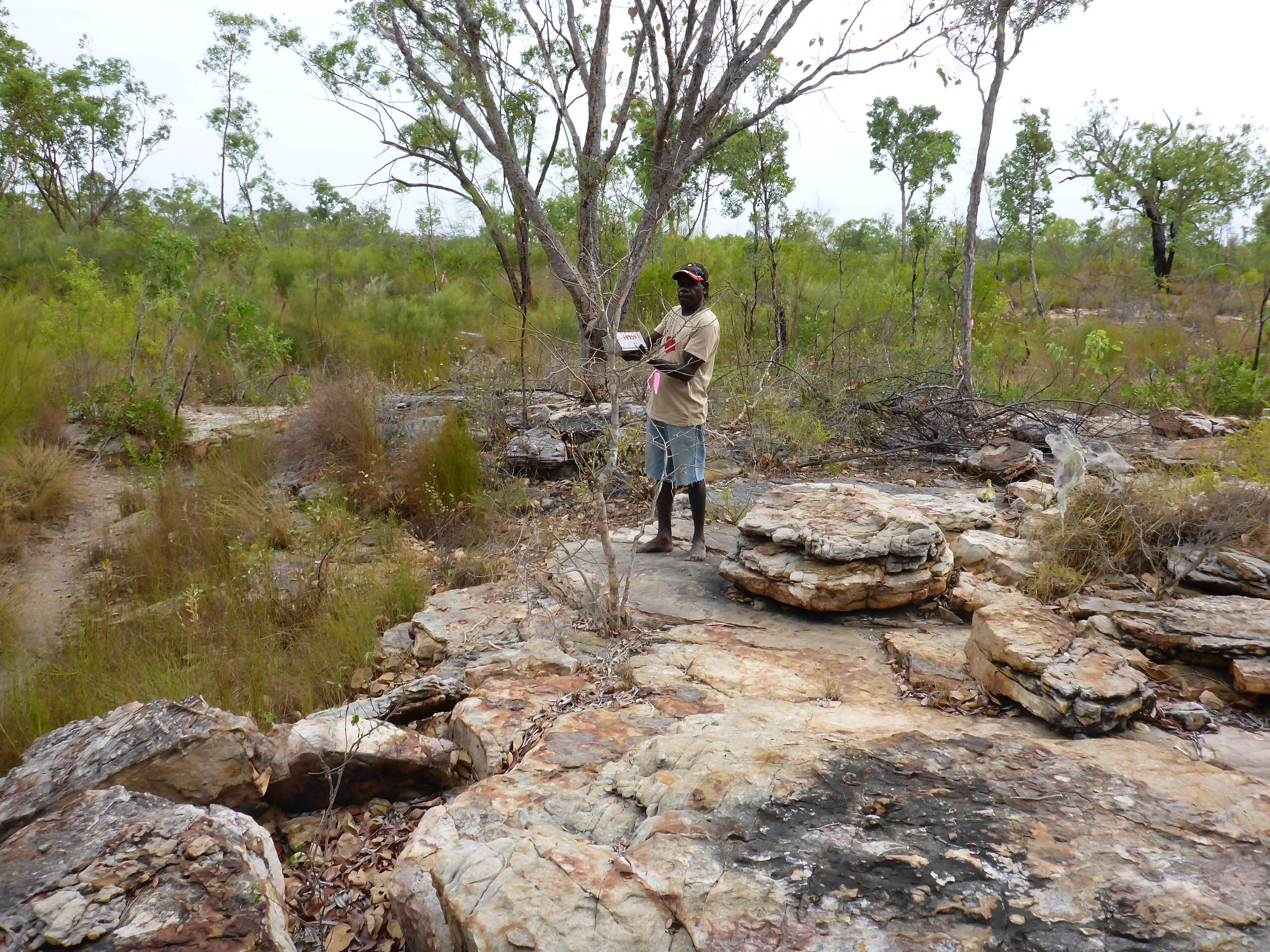
Suddenly, as we were continuing through the scrub, shouts drew us to a Pityrodia shrub, decorated in mottled orange and blues of a very important grasshopper: Leichhardt’s Grasshopper!
Talking amongst our survey team, and later in the SE Arnhem Land Aboriginal community of Ngukurr, most had either never seen this grasshopper before, or had not seen it since they were biginini (kriol for children). Cherry Wulumirr Daniels (70 year old senior Ngandi woman and founder of the Yugul Mangi Rangers) commented that it has cultural significance as when she was young she remembers being told not to touch them, but that the full story and name might be lost (see our first blog)… we will try and find them.
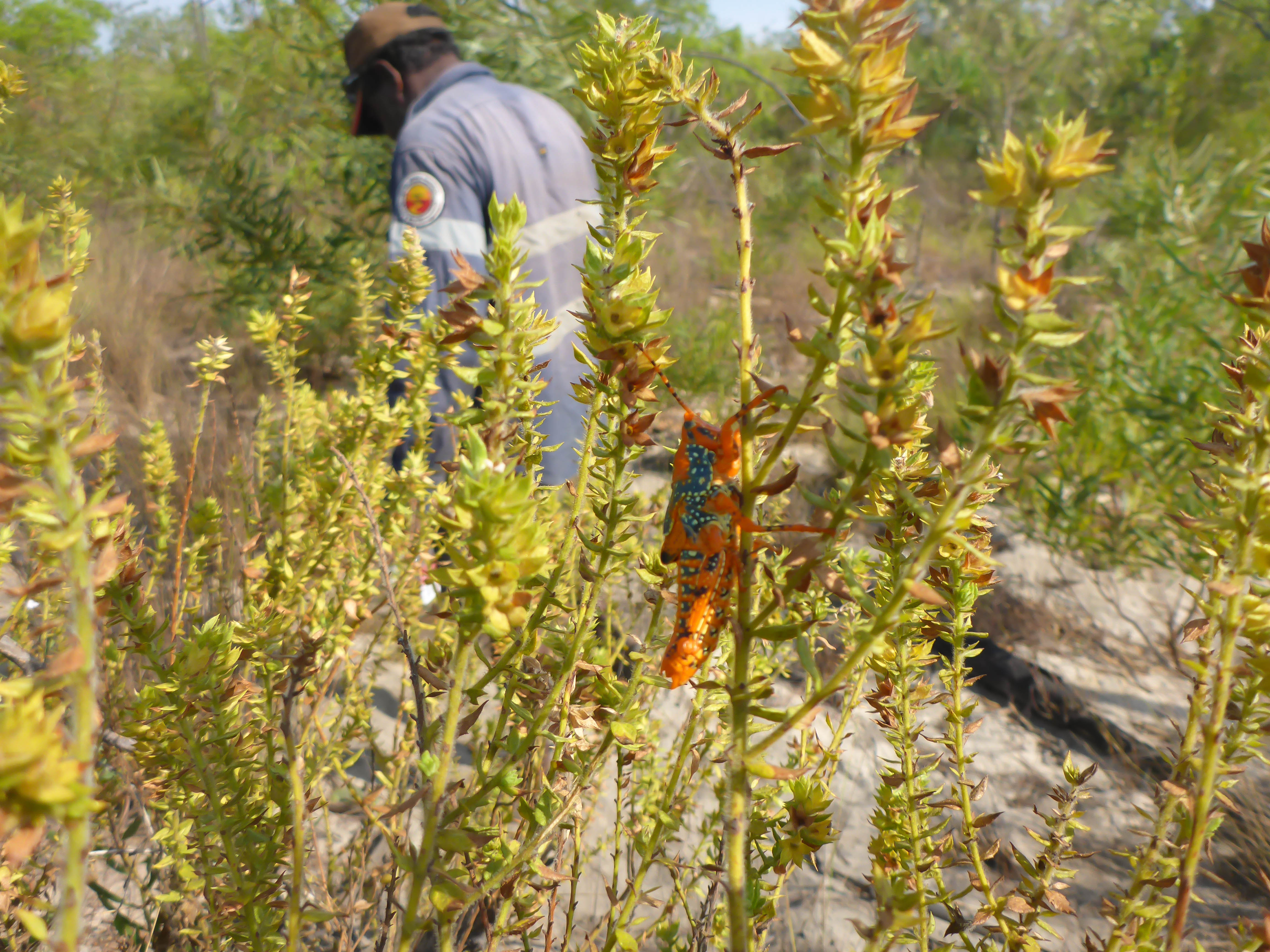
The bininj of western Arnhem Land (to the north of our study area) call it Alyurr or Namarrkon and believe it was created by the lightning spirit Namarrkon. During the build of the wet season, Alyurr is active and looking for Namarrkon. The first Australians of the Arnhem Land plateau knew this species well, and in time, it would be a species that only the most intrepid European explores could catch a glimpse of.
Ludwig Leichhardt was one of Australia’s earliest European adventurers, famous for his expeditions into the Australian outback. He kept detailed field notes, and on his trip in 1845 from Sydney to Port Essington (near Darwin, Northern Territory) he made the first Western scientific record of the species:
“Whilst on this expedition, we observed a great number of grasshoppers, of a bright brick colour dotted with blue: the posterior part of the corselet, and the wings were blue; it was two inches long, and its antennae three quarters of an inch.” – Ludwig Leichhardt, November 17, 1845
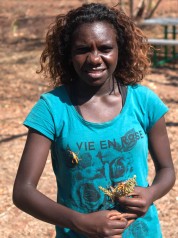

In 1848, three years after his initial expedition, Ludwig Leichhardt disappeared into the Australian Outback on what would be his last journey – he and his party were never found. For over one hundred years there were no records of the grasshopper, until a sighting in 1971 by J.H. Calaby. Unfortunately, in recent times it seems that the charismatic Leichhardt’s Grasshopper may be teetering on the edge of extinction, and risks fading into history, just as Ludwig did.
The current known distribution of the Leichhardt’s Grasshopper is dotted across the Arnhem Land plateau and escarpment, including in Kakadu National Park, Nitmiluk National Park and a single previous record in south-east Arnhem Land (Barrow 2009). It is thought that, like many insects, this grasshopper’s striking colouration is aposematic: meaning its conspicuous colours signal to predators that it is poisonous to eat (although no toxic chemicals have been found in either the animal or its food).
Our spotting of the Pityrodia shrub was a clue to the presence of the grasshopper, because of its special relationship to this plant. Leichhardt’s Grasshopper only eats a few species of Pityrodia which is in the mint family (Lamiaceae). Because they feed only on this daga (kriol for food) their distribution is restricted by the plant’s distribution, and they are both endemic to the Arnhem Land plateau and escarpment. Although they can occur in locally high numbers they are normally found in small groups, are sparsely distributed and have a low dispersal rate. Often they complete their life cycle on just one individual plant!
One last relationship reveals that out on Country, everything is connected. Pityrodia’s distribution is strongly linked to fire. Although this plant cannot tolerate frequent intense fires, it is dependent upon some fire to survive. In the absence of fire it will be outcompeted by other plant species: in some cases mass mortalities have been observed. Therefore it needs frequent low intensity fires.
Modern-day northern Australian fire regimes are characterised by fires that are later in the monsoonal dry season and which Cherry and the Rangers say are more frequent and more intense than traditional burning would have been in this region. Unburnt patches can act as refuges in stony country, a shelter for both plant and animal alike, but these are less likely to be protected during intense fires. Thus, fire impacts grasshoppers directly and by burning their only food source.
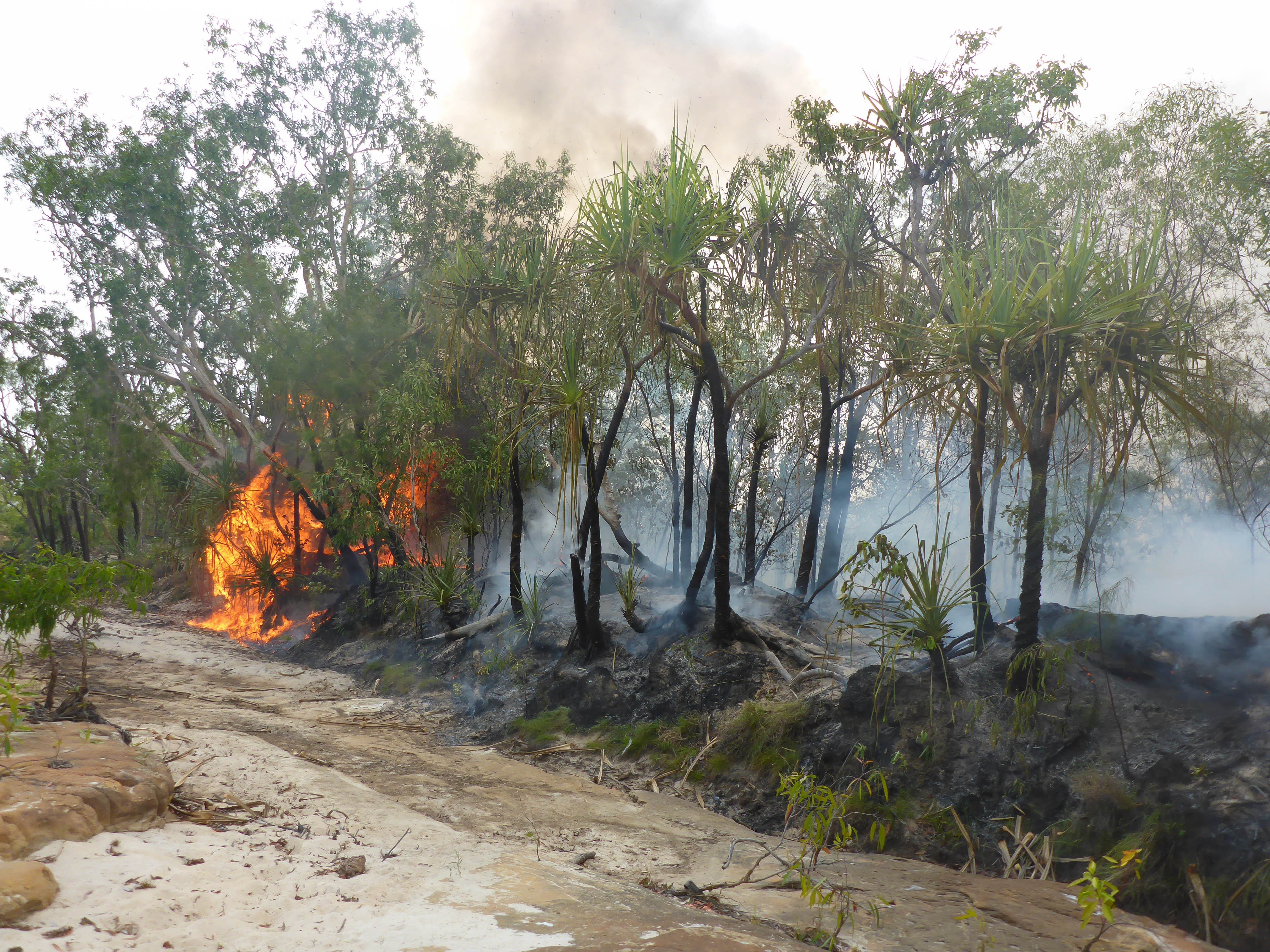
Research on Leichhardt’s Grasshopper populations in Kakadu National Park suggested that modern changes in fire regimes have negatively impacted this species. Traditional Aboriginal burning patterns may have been better for them. The Yugul Mangi Rangers want to protect Leichhardt’s Grasshopper, its Pityrodia and the area by making ‘right time fire’ in the cooler months of July to September. The Rangers took some of the grasshoppers to the local Ngukurr school and told these stories to the students, none of whom had ever seen these fascinating animals before.

Whether Leichhardt’s Grasshopper is indeed facing a fragile future depends on our future biodiversity surveys and good land management practices. Perhaps this elusive species is flourishing in the hidden sandstone crevices of the Arnhem Land plateau, as it continues to cycle in and out of Australia’s consciousness.
We are looking forward to learning more about this interesting grasshopper, including its distribution, ecology and cultural significance, as we continue our ALA project in South-East Arnhem Land Indigenous Protected Area (IPA).
Acknowledgements
Yugul Mangi Rangers include: Clarry Rogers (Co-ordinator), Winston Thompson (Senior Ranger), Simon Ponto, Ben Wilfred, Kelvin Rogers, Julie Roy (Senior Ranger), Rose Munur, Carmelina Ngalmi and Pollyanne Ponto. You can contact them at yugulmangi.rangers2@gmail.com.
Emilie Ens (Emilie.ens@mq.edu.au) and Mitchell Scott (Mitchell.scott@mq.edu.au); both are Cross-cultural Ecologists from Macquarie University, Sydney.
References:
Barrow P 2009. The role of fire in the ecology of Leichhardt’s grasshopper (Petasida ephippigera) and its food plants, Pityrodia spp. PhD Thesis, Charles Darwin University, Darwin.
Lowe L 1995. Preliminary investigations of the biology and management of Leichhardt’s grasshopper, Petasida ephippigera (White). Journal of Orthoptera Research 4, 219-21.
Price O, Russell-Smith J & Edwards A 2003. Fine-scale patchiness of different fire intensities in sandstone heath vegetation in northern Australia. International Journal of Wildland Fire 12, 227-36.
Wilson CG, Barrow PH & Michell CR 2003. New locations and host plants for Leichhardt’s grasshopper Petasida ephippigera White (Orthoptera: Pyrgomorphidae) in the Northern Territory. Australian Entomologist 30, 167–76.
